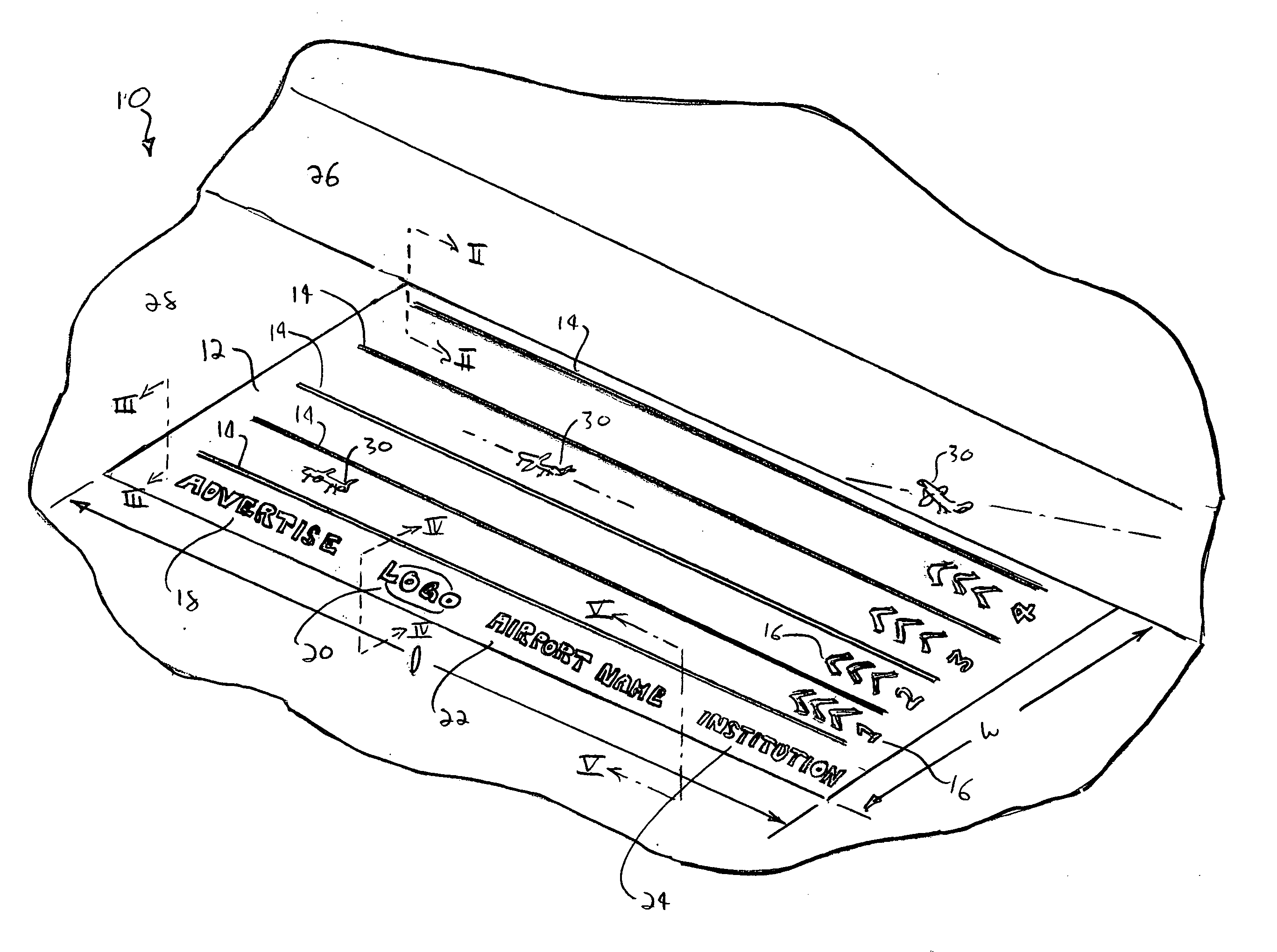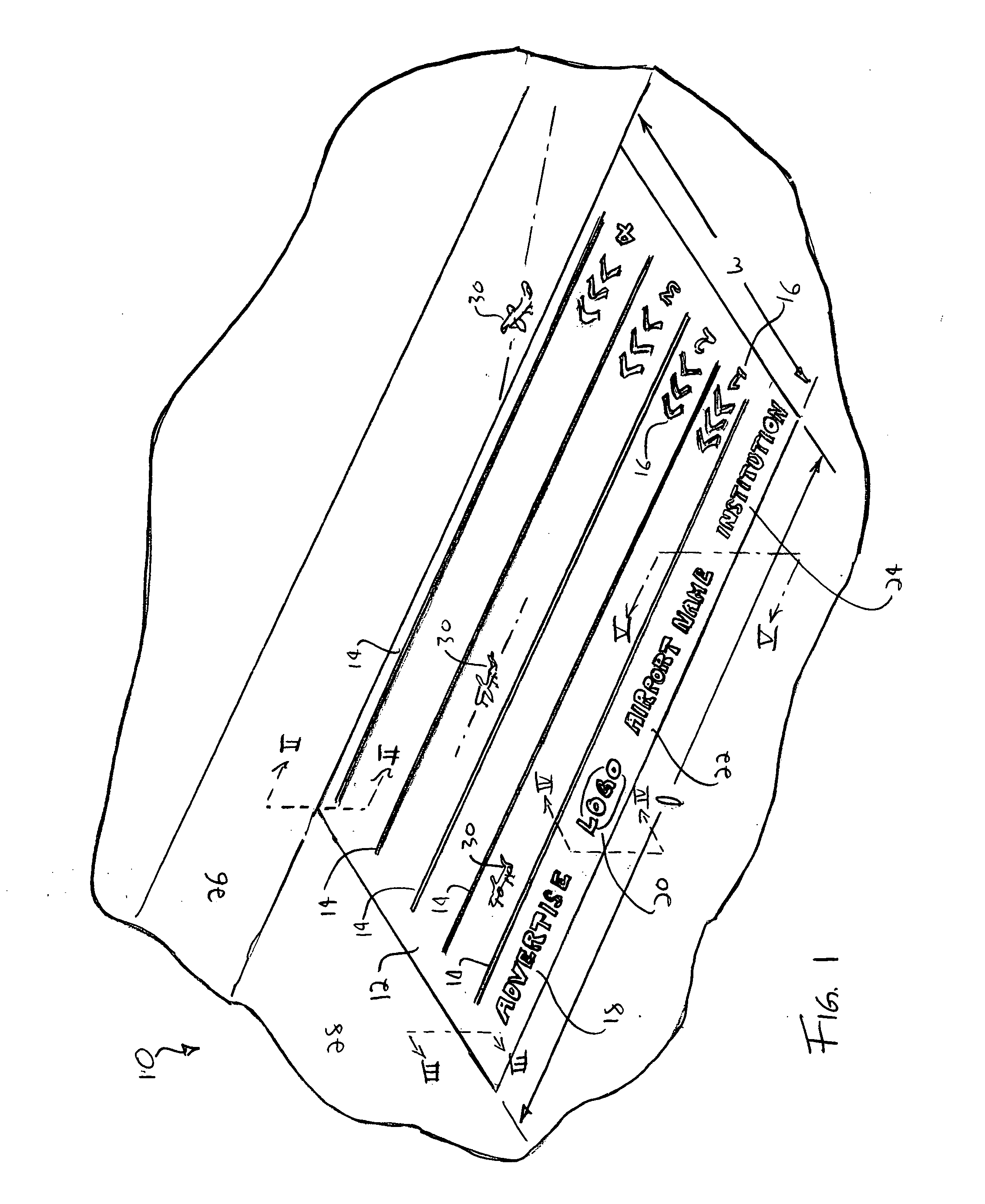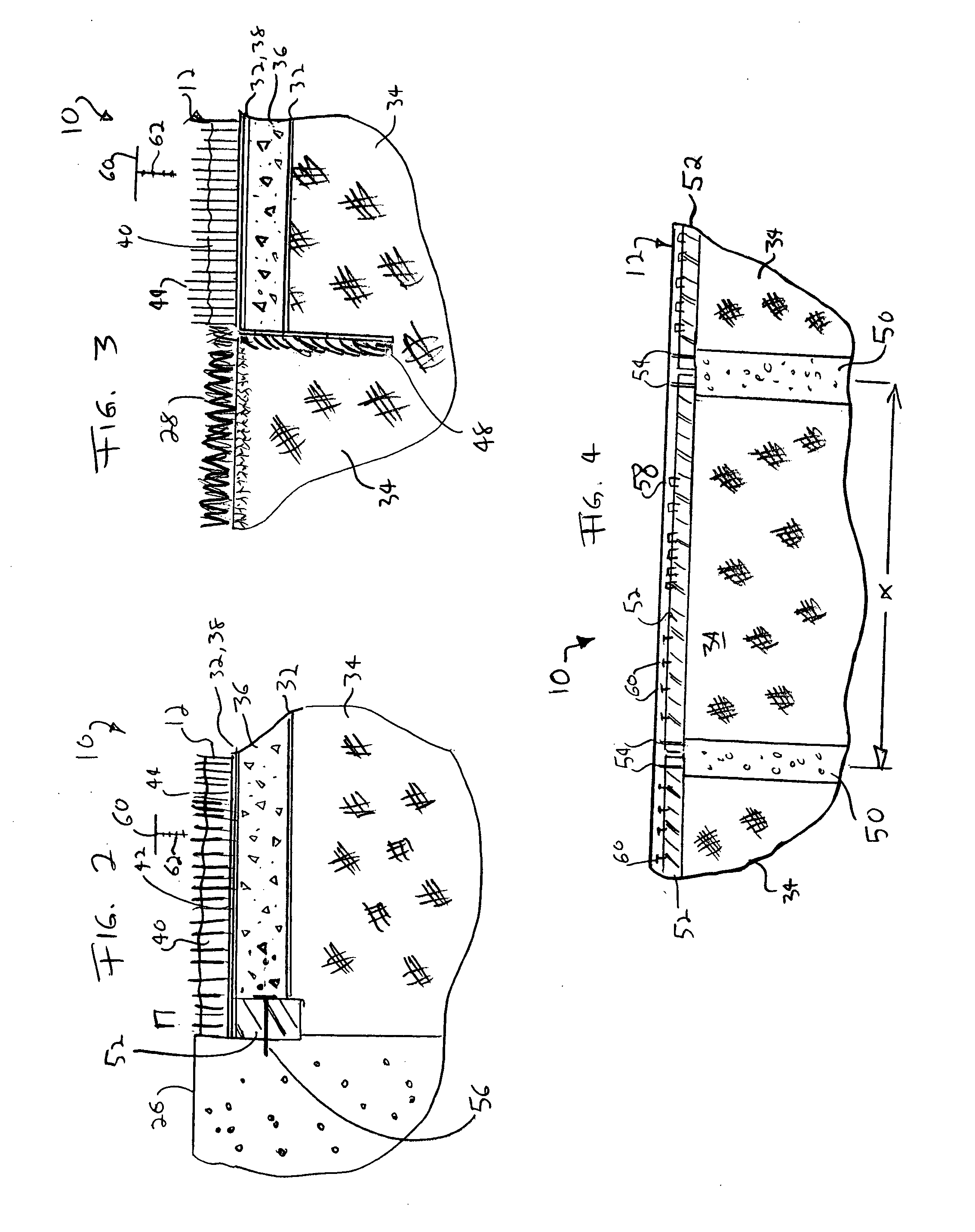Synthetic runway surface system
- Summary
- Abstract
- Description
- Claims
- Application Information
AI Technical Summary
Benefits of technology
Problems solved by technology
Method used
Image
Examples
Embodiment Construction
[0026] The present invention provides an artificial turf runway surface suitable for supporting takeoff, landing and taxiing of aircraft as that term has been described herein. The turf system cures many of the problems and pitfalls associated with natural grass systems, such as rutting, bare spots, unevenness, standing water as well as other problems associated with natural grass surfaces. The synthetic surface also removes nesting materials and food and thereby dissuades birds and other animals from landing and congregating thereon.
[0027] Referring now to the drawings and in particular to FIG. 1, one embodiment of the synthetic turf system of the present invention is illustrated by system 10. System 10 includes an area of synthetic turf 12. Various preferred embodiments for the synthetic turf used in the present invention are described in U.S. Pat. No. 6,620,482, entitled “Safety System for Airports and Airfields”, assigned to the eventual assignee of the present invention, the e...
PUM
 Login to View More
Login to View More Abstract
Description
Claims
Application Information
 Login to View More
Login to View More - R&D
- Intellectual Property
- Life Sciences
- Materials
- Tech Scout
- Unparalleled Data Quality
- Higher Quality Content
- 60% Fewer Hallucinations
Browse by: Latest US Patents, China's latest patents, Technical Efficacy Thesaurus, Application Domain, Technology Topic, Popular Technical Reports.
© 2025 PatSnap. All rights reserved.Legal|Privacy policy|Modern Slavery Act Transparency Statement|Sitemap|About US| Contact US: help@patsnap.com



